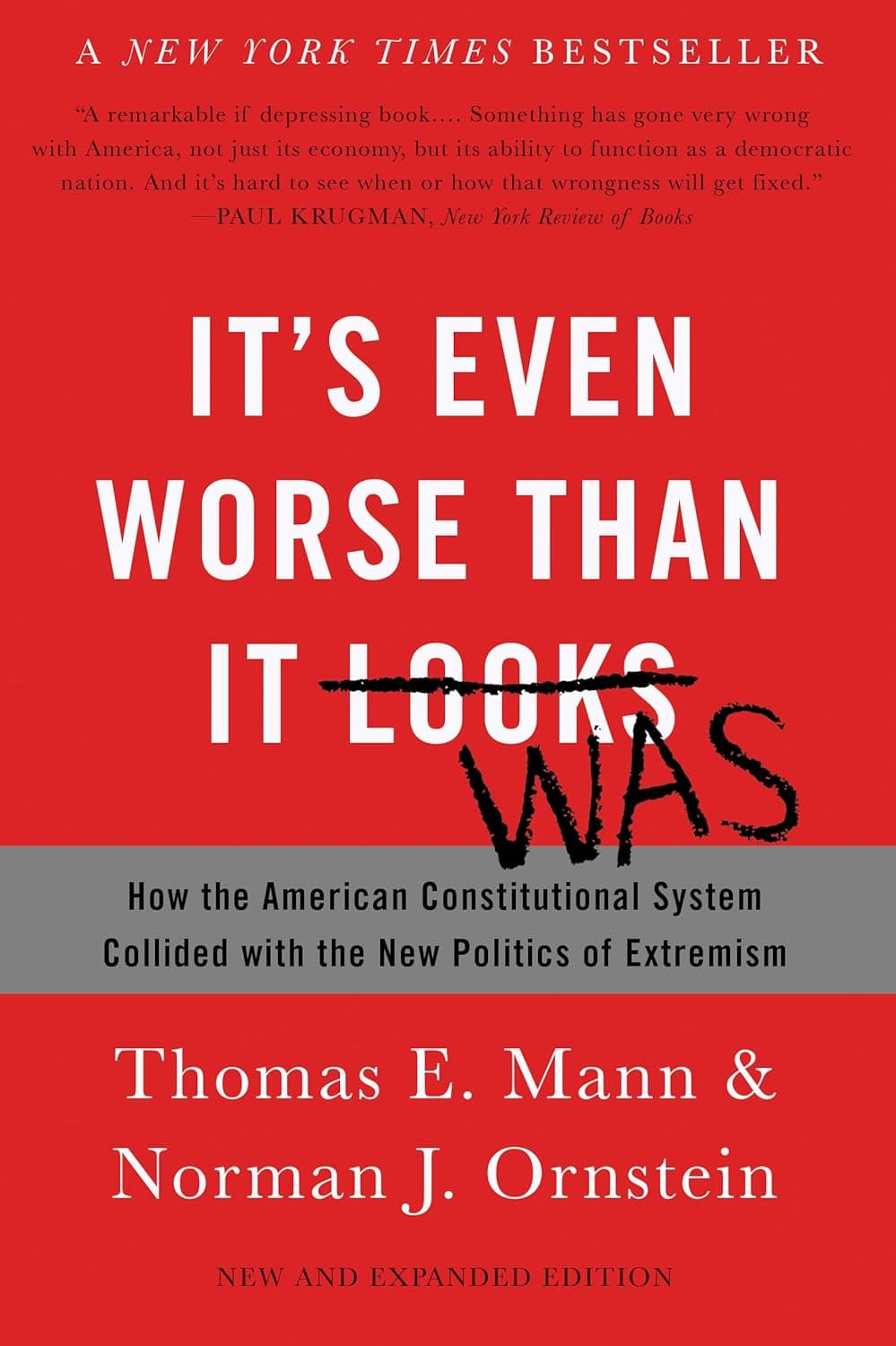
It's Even Worse Than it Looks
By: Thomas Mann
Category: Politics
Finished:
Highlights
We’ve reached a point of such intense political adversity that people who created a bill originally will lobby against it if their opponents end up supporting it.
Two major sources of dysfuction in politics today:
- “The first is the serious mismatch between the political parties, which have become as vehemently adversarial as parliamentary parties, and a governing system that, unlike a parliamentary democracy, makes it extremely difficult for majorities to act. Parliamentary-style parties in a separation-of-powers government are a formula for willful obstruction and policy irresolution.”
- “The second is the fact that, however awkward it may be for the traditional press and nonpartisan analysts to acknowledge, one of the two major parties, the Republican Party, has become an insurgent outlier— ideologically extreme; contemptuous of the inherited social and economic policy regime; scornful of compromise; unpersuaded by conventional understanding of facts, evidence, and science; and dismissive of the legitimacy of its political opposition.”
Also, since there is so much news variety now, news stations don’t need to portray a nice even view of the situation. They can appeal to a niche in order to maintain a loyal base, since TV usage is 60+ hours per week (!!), and people move around significantly between different channels.
“CNN has tried multiple business models, but has settled on having regular showdowns pitting either a bedrock liberal against a bedrock conservative or a reliable spinner for Democrats against a Republican counterpart. For viewers, there is reinforcement that the only dialogue in the country is between polarized left and right, and that the alternative is cynical public relations with no convictions at all.”
Term limits:
- “The quintessential bromide for curing the ills of American democracy is to limit the number of terms anyone can serve in Congress and in state legislatures.”
Three reforms to cool the conflict between the parties:
- “Moderate politics by expanding the electorate. Higher turnout would pull more citizens with less-fixed partisan and ideological commitments into the electorate. Near-universal voting (achieved through Australian-style mandatory attendance at the polls, which we explain more fully later) would virtually eliminate the parties’ incentive to diminish the turnout of those likely to support their opponent and to mobilize their strongest supporters.”
- “The second is to reduce the presumed bias against moderate voters and candidates by altering how votes in the election are converted into seats in government. The most visible proposal is to reduce the gerrymandering of legislative districts that produces more lopsided constituencies for the two parties. And, instant runoff voting (IRV), where voters can rank their candidate preferences, and electoral arrangements that provide a degree of proportional representation offer some promise of reducing polarization.”
- “The third avenue of electoral reform seeks to break the polarizing dynamic of the parties through changes in campaign fund-raising and spending rules and practices. The most promising methods are to mobilize large numbers of small donors and to enforce the transparency and genuine independence of super PACs and their nonprofit affiliates.

